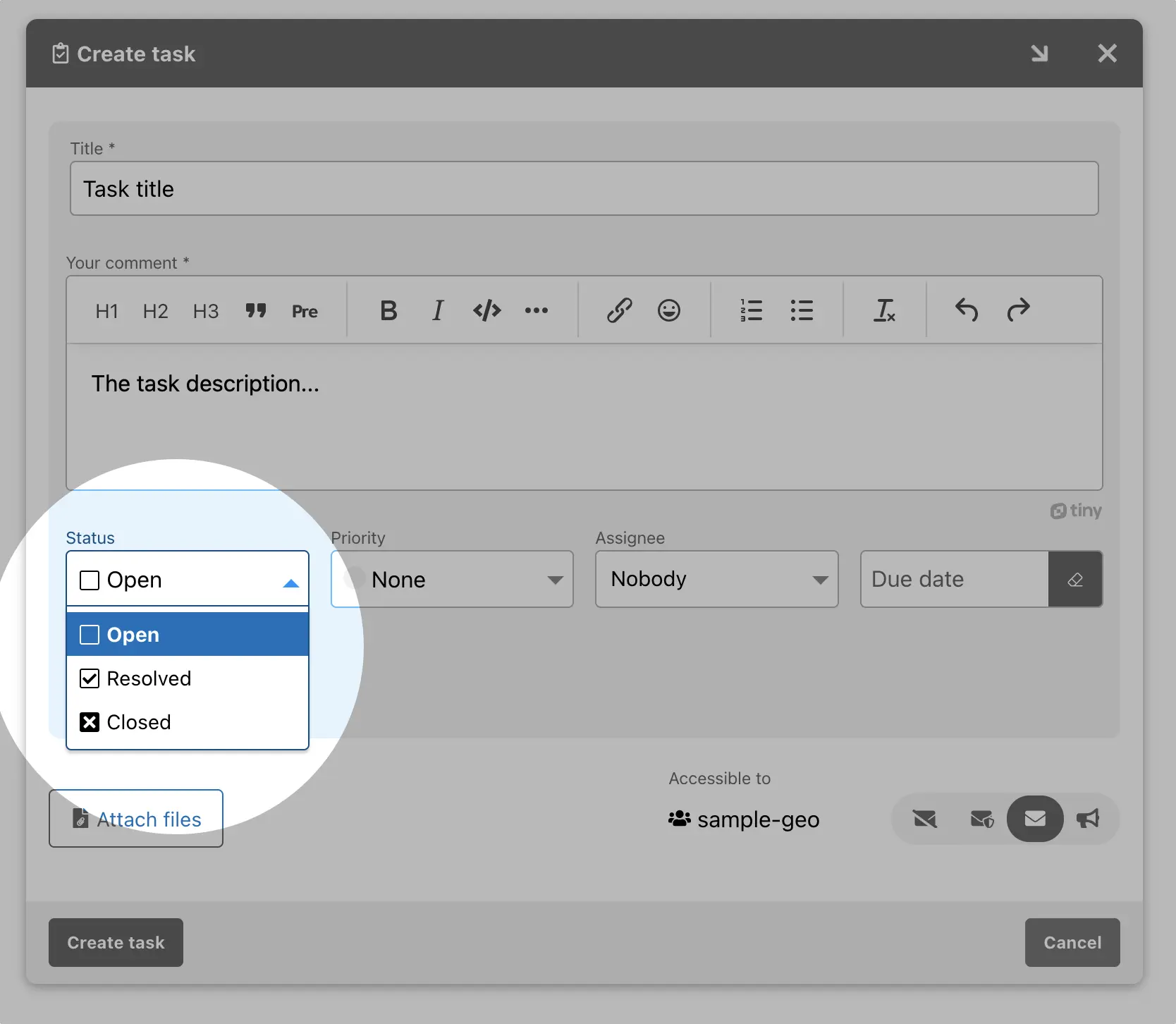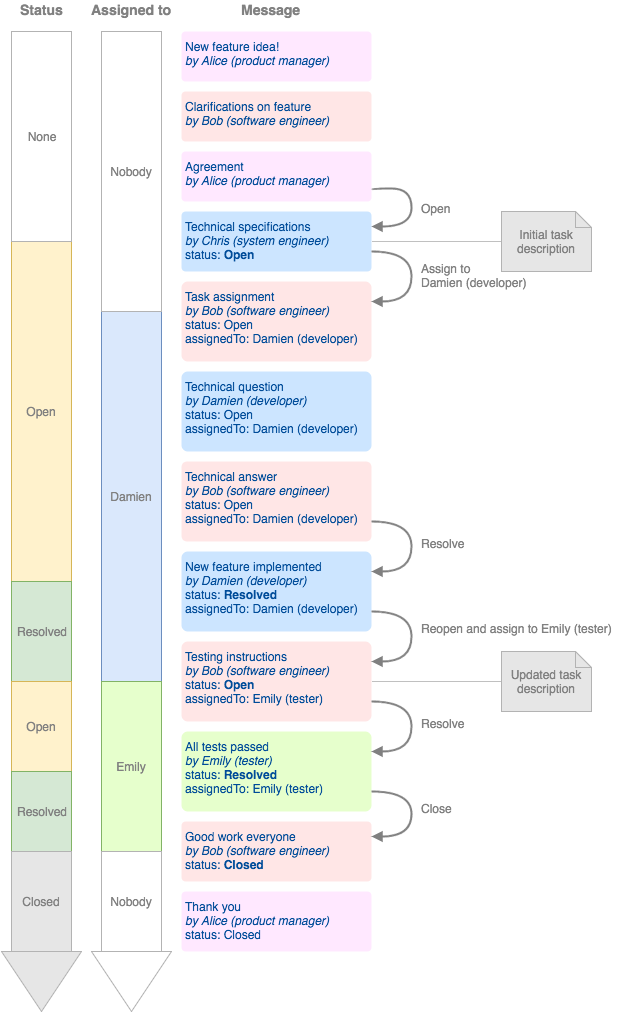Task status
The task status applies to comments in a discussion. The status of the last comment is the status of the task.
Task and comments
In the course of a discussion, a comment might contain some actionable items. For example, during a discussion on software, an issue might arise and require a developer to fix the problem.
To make this change natural and to provide useful background information, any discussion can be turned into a task by setting the status on a comment or reply to a comment.
The status of the last comment in the discussion is the task status.
Configuration
The task status is configured as part of the group or project configuration. See below for an explanation on PageSeeder’s default configuration.
Status and roles
The status that a member can set on a comment is based on their role within a group. For more information, see the status document.
Status order
The task status has a natural lifecycle order. The list of task status values must be entered in the same order and reflect the order in which the task status is naturally changed.
For example, if the task status is to start with 'Open', then naturally progress to 'Resolved' before being set to 'Closed', enter the statuses in the following order:
- Open
- Resolved
- Closed

PageSeeder defaults
The default task statuses in PageSeeder assumes a simple model where at least two people are involved. The first person is in charge of resolving the task, that is, carry out all necessary actions outlined in the task description. The second person is in charge of closing the task by ensuring that there are no outstanding actions.
- Any member of the group – except guests – can create a task.
- A contributor or higher then resolves the problem, either their own task or a task assigned to another member, then
- An approver or administrator can look at and close the task.
Default task status and roles
| Open | Resolved | Closed | |
|---|---|---|---|
| Approver | |||
| Manager | |||
| Contributor | |||
| Reviewer |
State diagram
Status description
Natural lifecycle: Open → Resolved → Closed
This is the initial status of a task after it has been created. The description of the task is typically defined in the most recent comment that gained that status.
For example, if a task arises from a discussion, set the status to ‘Open’ on the comment that describes the problem or action to take to fix it.
The task requires some actions to be carried out before it can be resolved or closed. The list of actions to be taken are defined in the task description, that is, the last comment that has had its status changed to 'Open'. This status is considered active.
Any member of the group – except guests – can create a task.
The work described in the task has been done and has resolved the corresponding issue. This status is an indication for the approver that the task must be verified. When a task is resolved, an email notification is sent to approvers.
In some cases, the approver can reopen the task and assign it to a member who can then perform the test or verification.
Only contributors or higher can resolve a task.
All actions required to solve the issue have been carried out. An approver has verified that the issue is resolved and the task no longer requires any action. If the issue has not been resolved, the task can be reopened. In the user interface, closed tasks are usually no longer listed a period of time after they have been closed.
This is normally the final state of a task.
Notification
Normally, email notification is controlled by setting the Notify option to 'silent', 'normal' or 'announce'. This defaults to 'normal', except when using the 'Update this task' feature, where it is always 'silent'.
However, when a status is changed, the following Group Properties determine if an email notification is sent, even when Notify is set to 'silent':
broadcastStatusChange– Iftrue, then notification is broadcast to all authors or assigned members for that task. This can be used to notify the assigned that they have a task to do. Default isfalse.broadcastStatusApprovers– If the new status is listed here, then notification is broadcast to all approvers in the group. This can be used to notify approvers that a task is ready for them to review. Default is empty.
Example
The following example shows the lifecycle of a task to implement a new feature in some software as a result of a discussion.

